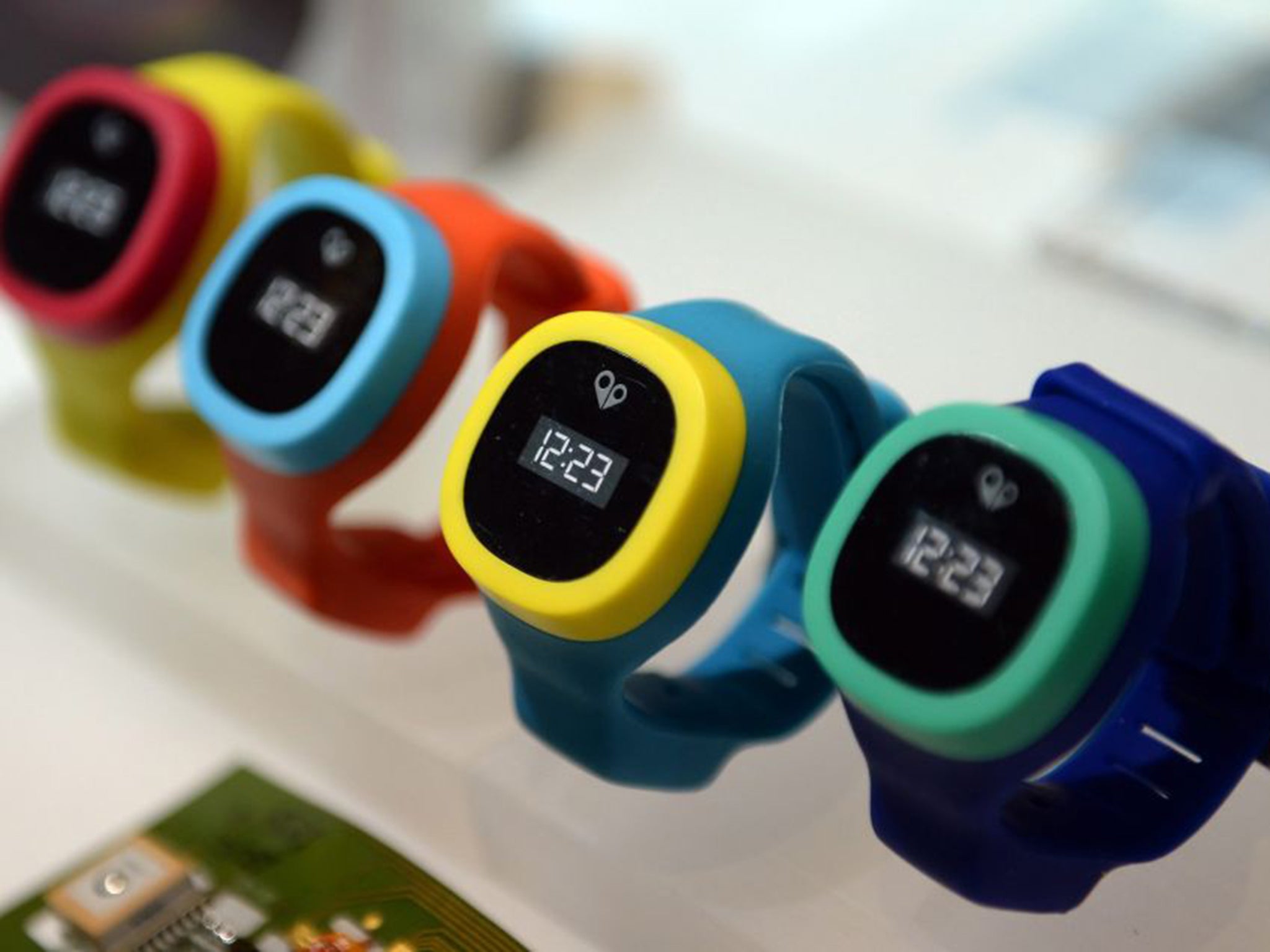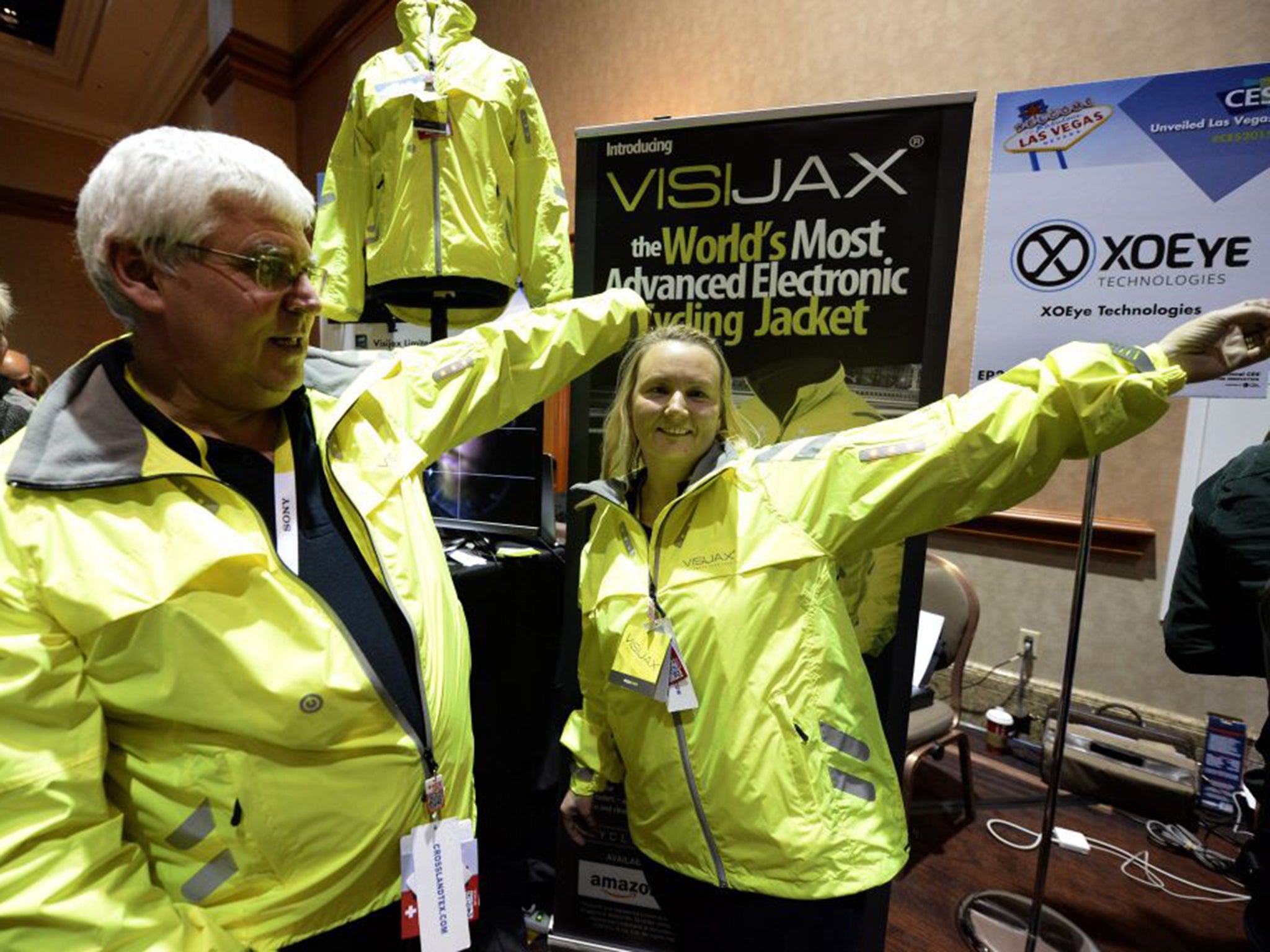CES 2015: The next big thing? Watch this space for smartwatches, fitness trackers and other wearable devices
The CES exhibition in Las Vegas is awash with wristbands, watches and smart garments but, as Mohana Ravindranath reports, the technology has some developing to do

At the International CES expo, which kicks off in Las Vegas today, wearable devices – smartwatches, fitness trackers and other gadgets with embedded sensors – will be competing for floor space at with more traditional consumer tech.
Out of more than 3,000 exhibitors, about 585 registered with products in the wearables category, according to the CES directory. Smartwatch exhibits alone are expected to cover almost 2,000 square feet at the show, up from 900 square feet last year, according to the Consumer Electronics Association, the Virginia-based trade group that organises CES.
The appetite for these gadgets has been growing steadily. Shipments of wearable gear are expected to exceed 19 million units for 2014, according to a report from International Data Corp, and could reach nearly 112 million units by 2018. In the first quarter of 2014, the San Francisco technology company Fitbit dominated the wristband market, accounting for about 50 per cent of the total 2.7 million units sold, according to a report from the research firm Canalys. But other big names are entering the fray.
In September, Apple unveiled its Apple Watch, a wristwatch it said would run many popular iPhone apps. Slated for public release early this year, it can receive calls, texts and emails, and track the wearer’s fitness, among other features.
Also in September, Intel announced plans to sell a chunky bracelet for women, inlaid with semiprecious stones, called Mica – My Intelligent Communication Accessory – each equipped with a screen that can show meeting alerts, texts and other notifications.
In the relatively new market for wearables, there is still room for start-ups to compete with technology giants, according to Ramon Llamas, IDC’s research manager for mobile phones. He said: “If we run the clock back to 2011, nobody had heard of companies like, say, Fitbit.”

Rona Bunn is founder of BlueJewelz, one such US start-up making its debut at CES. Ms Bunn’s six-person team plans to showcase small, sterling silver pendants – a heart-shaped locket, for instance – that contain removable notification chips that can vibrate when the wearer receives an important text or other notifications.
Ms Bunn said she hoped to sell BlueJewelz pendants – which are still in the prototype phase – for anywhere between $70 and $300 (£46 and £197), significantly less than Intel’s Mica, which goes for $495 (£325) online.
Ms Bunn, an engineer, founded the company because she was “being blamed by my family for not being more attentive”, she said. “I’m busy all day. I’m in meetings all day. I can’t really pull out my phone.”
SunFriend, meanwhile, sells waterproof, watch-like devices that monitor the wearer’s sun intake and UV exposure. The devices, sold online through Amazon for about $50, flash when wearers have reached the maximum healthy level of sun exposure and when they risk skin damage.
Vorbeck Materials manufactures and sells components that other businesses can use to produce wearable technology. Vorbeck specialises in graphene, a material that is one atom thick; the company produces graphene-based inserts that can monitor heart rate, temperature and other metrics.
The company’s president, John Lettow, declined to share the names of Vorbeck’s business customers, but said the company had been working with wearable technology for two to three years.
“We’ve really been working to refine technology for true mass production in the apparel industry,” he said. Instead of a “T-shirt that can monitor all kinds of things but costs $300”, Vorbeck aimed to help businesses reduce the price to, say, $30 or $40.
At CES, Vorbeck will demonstrate a full-body suit designed for racing drivers, embedded with monitors for heart rate and muscle activity, as well as a prototype car built with graphene nanotechnology, featuring tyre-wear sensors and acoustic sensors that detect maintenance needs, among other features.
Mr Lettow said this was the first time Vorbeck would focus much of its exhibit on wearable technology – its other products include technology to improve energy storage, and anti-theft sensors for packages. Wearable technology was poised to “change the way we interact with electronics”, he said. “The trick is to find out what the best applications and implementations of it are.”
Despite their popularity at CES and other trade shows, IDC’s Mr Llamas said wearables might not take off as quickly as some were expecting, especially since wearable devices often relied on a smartphone or tablet to aggregate the information they were collecting or relaying. For now, he said, wearables tended to be luxury devices that enthusiasts bought once they already had smartphones and tablets.
© The Washington Post
Join our commenting forum
Join thought-provoking conversations, follow other Independent readers and see their replies
Comments